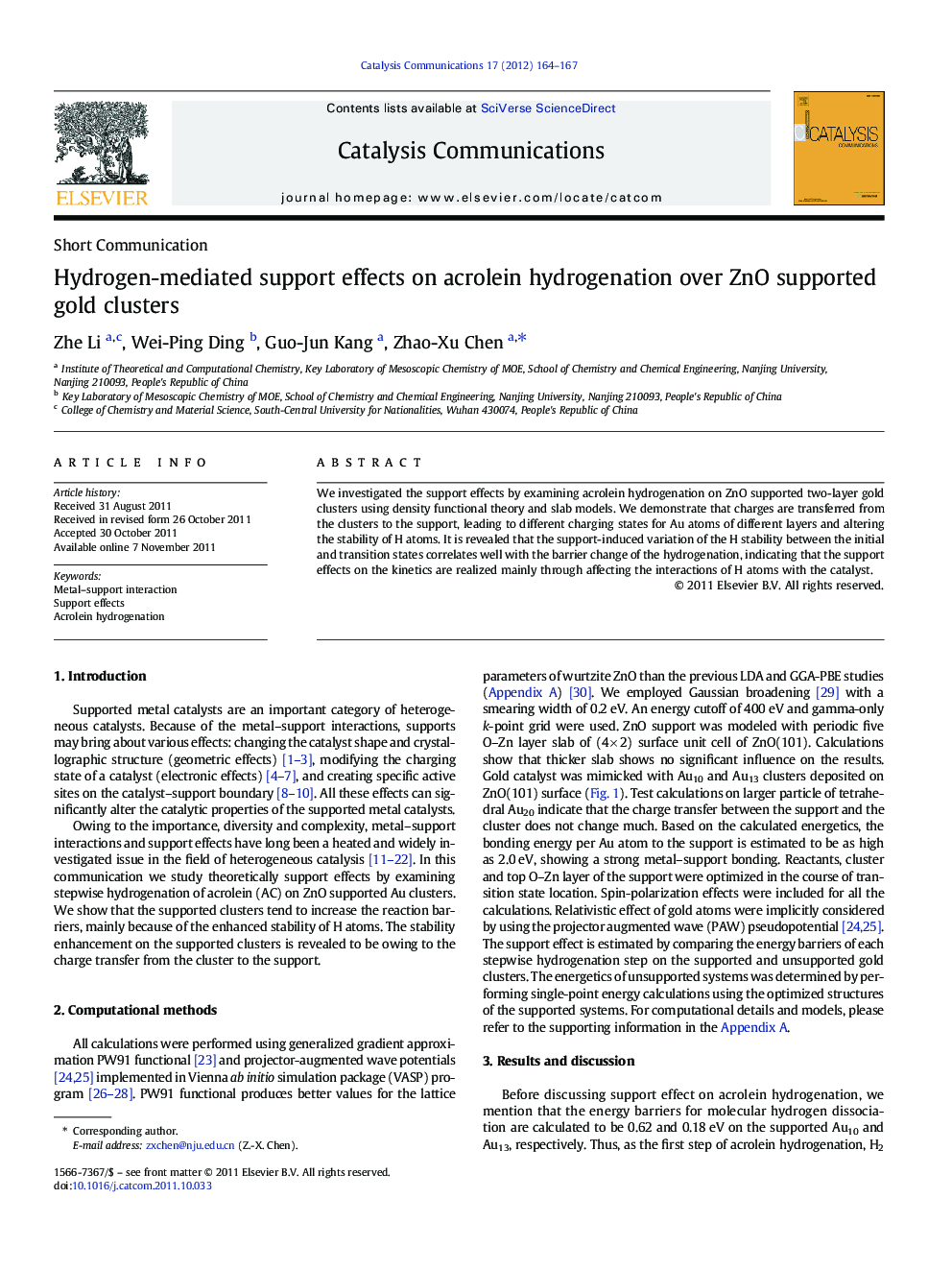| Article ID | Journal | Published Year | Pages | File Type |
|---|---|---|---|---|
| 50992 | Catalysis Communications | 2012 | 4 Pages |
We investigated the support effects by examining acrolein hydrogenation on ZnO supported two-layer gold clusters using density functional theory and slab models. We demonstrate that charges are transferred from the clusters to the support, leading to different charging states for Au atoms of different layers and altering the stability of H atoms. It is revealed that the support-induced variation of the H stability between the initial and transition states correlates well with the barrier change of the hydrogenation, indicating that the support effects on the kinetics are realized mainly through affecting the interactions of H atoms with the catalyst.
Graphical abstractWe investigated the support effects by examining acrolein hydrogenation on ZnO supported gold clusters using density functional and slab models. Charges are transferred from the clusters to the support, leading to differently charged Au atoms. H atoms interact more strongly with positive gold atoms than with negative ones. It is revealed that the variation of the interactions of H atoms with the cluster accounts for the support effects on the reaction kinetics whereas the electric field effect is minor.Figure optionsDownload full-size imageDownload as PowerPoint slideHighlights► We studied acrolein hydrogenation on Aun/ZnO (n = 10, 13) to explore support effects. ► Metal–support interaction results in differently charged Au atoms. ► Positive Au atoms interact more strongly with H atoms than neutral and negative ones. ► Support effects are realized via changing the interactions of H with the metal. ► Electric field effect does not dominate the support effect.
